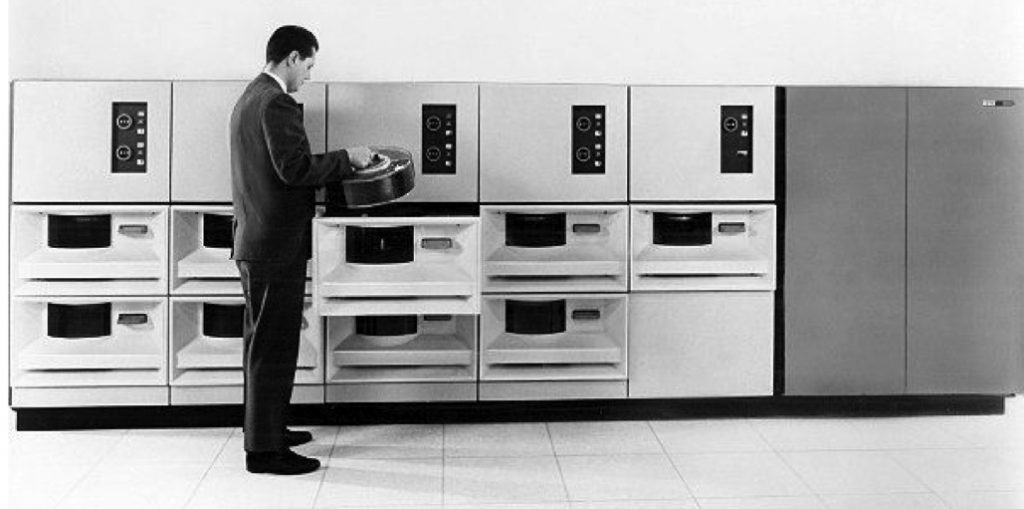History (1966): Ferrite Heads Improve HDD Speed and Density
On IBM 2314 direct access storage facility
This is a Press Release edited by StorageNewsletter.com on March 12, 2018 at 2:10 pmThis article comes from the Computer History Museum.
1966: Ferrite heads improve HDD speed & density
Recording density advances permit economical massive online storage
IBM 2314 direct access storage facility (1965)
 (Courtesy © International Business Machines Corporation)
(Courtesy © International Business Machines Corporation)
First shipped in 1966, the IBM 2314 direct access storage facility (DASF) introduced both ceramic flying heads and ceramic ferrite cores, replacing stainless steel heads and Permalloy laminated mu-metal transducer cores in earlier drive units.
The ceramic flying head was mechanically more durable than stainless steel, and the ceramic ferrite read/write core gave better high frequency performance.
The drive access consisted of 20 individual R/W heads mounted on a common actuator that was moved in and out hydraulically. The ceramic heads flew at 85 microinches above a disk surface spinning at 2,400rpm.
Compared to the 2311, areal recording density doubled to 0.22Mb per square inch and contributed to doubling the data transfer rate to 2.5Mb/s.
The 2314 contributed directly to the early success of the IBM System/360 and System/370 Models 135 through 195 by offering high-capacity storage at four times lower price per megabyte than the earlier Model 2311 disk drive.
The facility comprised eight drive units plus a spare together with a control system in a single product.
It employed a new Model 2316 disk pack with 11 disks that doubled the number of storage surfaces to 20 compared to IBM’s first removable disk pack, the 1316. Increased recording density provided a storage capacity of 29.2 million bytes per pack or 233 million bytes in the eight-drive facility. This represented one of the first disk products with a capacity and price point to allow all of a user’s data to remain on line, replacing other storage systems in many applications.














 Subscribe to our free daily newsletter
Subscribe to our free daily newsletter

